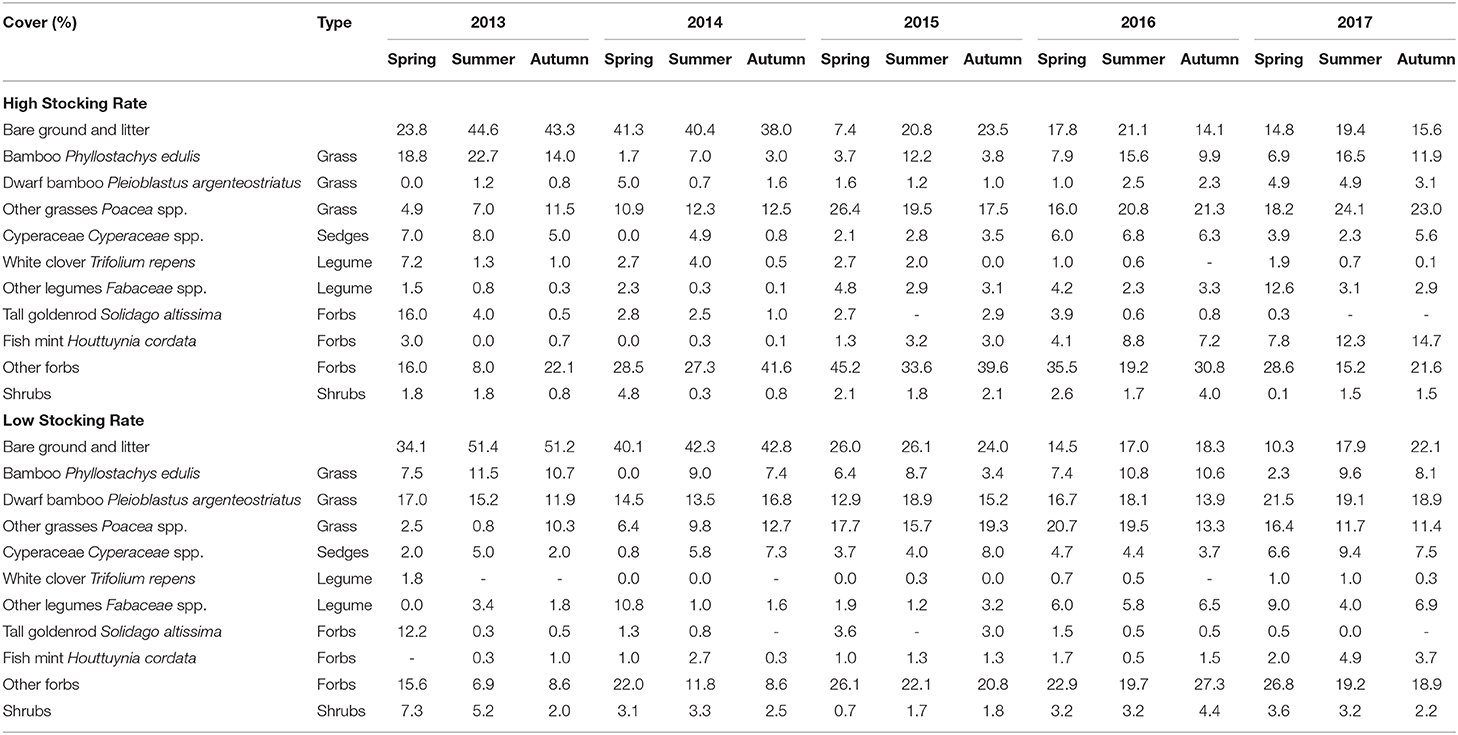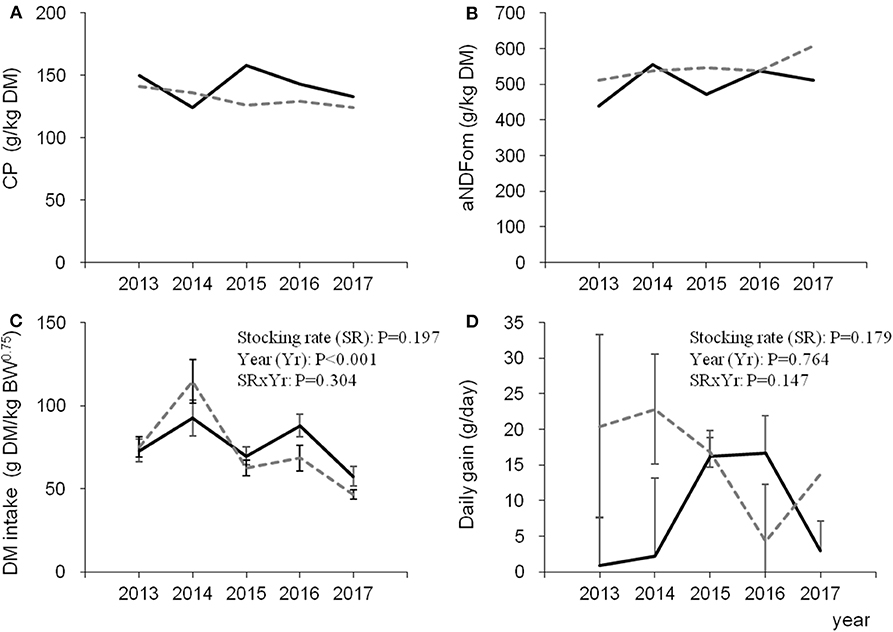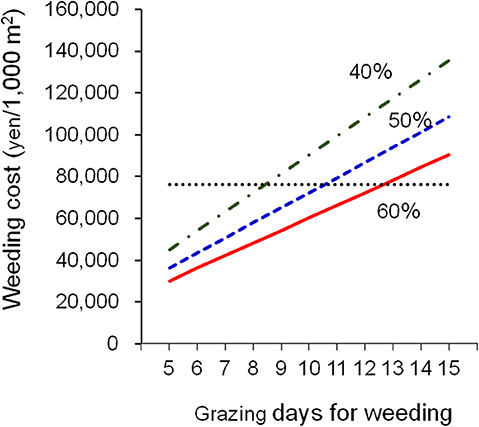
94% of researchers rate our articles as excellent or good
Learn more about the work of our research integrity team to safeguard the quality of each article we publish.
Find out more
ORIGINAL RESEARCH article
Front. Sustain. Food Syst. , 23 September 2020
Sec. Agroecology and Ecosystem Services
Volume 4 - 2020 | https://doi.org/10.3389/fsufs.2020.541721
This article is part of the Research Topic Grazing in Future Multi-scapes: From Thoughtscapes to Landscapes, Creating Health from the Ground Up View all 46 articles
Agricultural intensification and socioeconomic changes over several decades have generated many abandoned fields. These changes have led to reduce plant and animal biodiversity, as well as associated loss of ecosystem services, and represent deterioration of a unique socio-ecological production landscape known as “Satoyama” in Japan. Appropriate management measures should be implemented to restore these abandoned fields. The objectives of this study were to: (1) determine the effect of goat grazing on vegetation dynamics and animal performance in response to different stocking rates over a 5-years period; and (2) evaluate the economic potential of weed management through goat grazing by comparing this method to mowing with a brush cutter. We found that goat grazing changed vegetational composition, increased the number of plant species, and improved plant diversity in the abandoned field, although stocking rate had little effect on plant diversity. Goat grazing changed vegetation quality, even though goats maintained their nutritional status and body weight over 5 years. Goat grazing showed economic advantages over mowing during a relatively short period (up to 8–12 days per 1,000 m2). Overall, we found that goats would be ecologically and economically useful in restoring, managing, and conserving agricultural fields. However, a more comprehensive approach is still necessary for conserving “Satoyama.” Combination of grazing, mowing with a machine and prescribed burning may be more effective, and animal and biofuel production in these field would be a solution for reducing field abandonment.
Satoyama is a unique socio-ecological production landscape composed of a mosaic of paddy fields, secondary forests, grasslands, ponds, and streams that create and provide various habitats to many plant and animal species in Japan (Washitani, 2001; Katoh et al., 2009). However, agricultural intensification and socioeconomic changes over several decades have induced outflow and aging of rural population who manage this production landscape. These changes also have decreased economic incentive to use marginal agricultural field, resulting in many abandoned fields in this area. Since the mid-1970's, the area of abandoned field in Japan have increased and it is currently over 400,000 ha. More than half of these areas are now considered unsuitable for paddy and crop farming (Ministry of Agriculture Forestry Fisheries, 2018) due to encroachment and overgrowth of weedy and shrubby plants. Typical dominant species in an abandoned field are bamboo (Phyllostachys edulis, P. bambusoides, and P. nigra var. henonis), dwarf bamboo (Pleioblastus argenteostriatus f. glaber, P. chino Makino, etc.), Kudzu (Pueraria montana var. lobata) and other alien species such as tall goldenrod (Solidago altissima). These plants spread to an abandoned field by vegetative growth or anemochory from neighboring forests and fields. In the past, these weedy and shrubby plants have been removed by human mowing with brush cutter and other machines. However, labor shortage in rural area makes it difficult to use this approach. Thus, appropriate and alternative management measures should be implemented to restore and utilize these abandoned fields.
Grazing may be a feasible way to manage these abandoned fields (Hall, 2018) as herbivores prevent encroachment and overgrowth of weedy and shrubby plants (Popay and Field, 1996). Goats eat more shrubby and woody plants than cattle and sheep and may thus be effective weed managers (Animut and Goetsch, 2008). Moreover, goats can survive in nutritionally harsh environments because of their ability to eat a wide range of plants and their low metabolic requirements, and they are capable of grazing and moving in hilly and steep marginal areas.
Abandoned fields are typically composed of semi-natural vegetation, which is often lower in nutritional value than sown plant species. Moreover, vegetation and animal performance are largely influenced by stocking rate; long-term grazing at different stocking rates induces qualitative and quantitative changes in field vegetation, leading to differences in animal performance and affecting sustainable grazing in the management of abandoned fields. Furthermore, the economic potential of controlling weeds through goat grazing should be evaluated, because economical sustainability is also crucial to promote the dissemination of goat weeding as a strategy to restore abandoned fields.
In this short report, we present the quantitative and qualitative dynamics of vegetation and goat performance in response to different stocking rates over a five-year period. Then, we discuss the economic potential of weed management through goat grazing by comparing this method with human mowing with a brush cutter. Understanding these dynamics will facilitate the use of sustainable goat grazing systems to maintain the unique “Satoyama” landscape and its biodiversity.
This study was approved by the Committee for Animal Research and Welfare of Gifu University (#13022, 15020, and 17034). The study was conducted in a 0.8-ha abandoned field (35°29′ N, 137°1′E, alt. 130 m) mainly dominated by bamboo (P. edulis) for many years after abandonment. Shiba × Saanen crossbreed goats (16–17 goats with initial mean body weight (BW): 26.3 ± 8.0 kg at the start of grazing) were used for this study. Before the start of this study, the bamboo was clear-cut; then, the site was divided into two areas in which two stocking rates, high (HS: 30–33 goats/ha) and low (LS: 14 goats/ha), were implemented for 5 years. Generally, animal and vegetation measurements were conducted each year in spring (late May), summer (late July), and autumn (mid September to early October); however, those in the 1st year were 1 month later because of a month delay of the start of grazing. Plant biomass was estimated in six random plots (50 cm × 50 cm/plot) from each stocking rate; edible parts were collected for chemical analysis. Botanical composition was estimated in 20 fixed plots (25 cm × 25 cm/plot) at each stocking rate and was classified into forbs, Poaceae, Cyperaceae, shrubs, bamboo, and dwarf-bamboo (P. argenteostriatus). Forage intake by goats was estimated using a double-indicator method with n-alkane (Dove and Mayes, 2006) and acid detergent insoluble ash (ADIA: Nakano et al., 2007). Each n-alkane capusel (C32) was administered to five goats in each stocking rate twice a day for 2 weeks. Then, fecal grab samples were collected from the rectum of the goats twice a day in the latter half of the weeks. Dietary n-alknae and ADIA contents were estimated by the combination of monitoring foraging behavior and hand-clipping. Foraging behavior of four goats (two goats/day) was observed for 2 h in the morning and evening feeding bouts. The top 9–10 plant species in their ingestive bites (~80–90% of the total bites) were collected by simulating feeding behavior. Forage dry matter (DM) intake was estimated as follows:
DM intake (kg DM/day) = (fecal output [kg DM/day]/(1–digestibility)
Fecal output (kg DM/day) = C32 dose rate (mg/day)/C32 fecal content (mg/kg DM)
Digestibility = (1–[ADIA g/kgDM in diet]/[ADIA g/kg DM in feces])
Goats were weighed at the start and end of each investigation period. Forage intake and daily gain (DG) were analyzed using a generalized linear mixed model. Individual goat was assumed as a statistical unit. Botanical and chemical compositions were not analyzed statistically, because we just have one study site in each stocking rate.
A simple simulation study was conducted to compare weeding cost by goat grazing and human mowing with a brush cutter. The weeding area was set at 1,000 m2, and weeding was conducted twice during May–November. Cost for human weeding with a brush cutter included cost for weed cutting, removing, and disposal, and the cost of each process was estimated following the cost estimate standards for civil engineering work (Ministry of Land Infrastructure Transport and Tourism, 2017); with this, the total cost for human weeding was estimated at 76,400 yen (685 US dollar)/1,000 m2.
Cost for goat weeding was estimated using seven goats (to simulate a real-life situation) and the following equation:
where, Pc is purchase price of a goat, Cp is selling price at the culling, Wyr is working years of a goat, AMc is annual management cost for a goat, Oc is operating cost, and Wday is working days per year. Pc was estimated according to the market price in the previous 5 years (National Livestock Breeding Center, 2018); Cp was estimated at 6,000 yen according to the market price; Wyr was assumed to be 7 years; AMc, including feeding cost out of the weeding period and health management, was set at 70,000 yen/yr; Oc, including shelter and fence, tax and public dues, and sundries was estimated at 30,000 yen/yr according to past records of a weeding contractor; and Wday was considered as 84 (40%), 105 (50%), and 126 (60%) days during the grazing season (210 days: from May 1st to November 30th)—and considered that the daily fee for using a goat decreases as goats become more engaged in weeding. Weeding cost per 1,000 m2 was determined according to this goat fee and grazing/weeding days at the site.
Goat grazing at different stocking rates did not decrease forage biomass over time, but it clearly affected botanical composition. The dominant plant species at HS changed from bamboo to tufted grass species over 5 years, while dwarf-bamboo was continuously dominant at LS (Table 1). Both bamboo and dwarf-bamboo are resistant to defoliation due to rhizomatous and vegetative reproductive (Fujii and Shigematsu, 2008). However, although goat grazing effectively reduced the dominance of bamboo, it did not reduce that of dwarf-bamboo.

Table 1. Changes of botanical composition during 5-years grazing at different stocking rate in an abandoned field.
The number of plant species increased from 33 in the 1st year to over 50 in the 5th year, regardless of the stocking rate. The Shannon diversity index also increased from the 1st to the 5th year at both stocking rates (HS: 2.3–2.8; LS: 2.1–2.6). These results suggest that goat grazing in the abandoned field for 5 years clearly changed vegetational composition, increased the number of plant species, and improved plant diversity, although stocking rate had little effect on plant diversity (Herrero-Jáuregui and Oesterheld, 2018).
Changes in botanical composition affected diet quality (Figure 1). At HS, diet quality—reflected by crude protein (CP) and neutral detergent fiber (NDFom)—was relatively constant throughout the study period, whereas at LS, diet quality decreased over the 5 years, leading to a decrease in forage intake by LS goats. Although goat grazing altered vegetation quality, the goats maintained their body weight and nutritional status over the 5-years period at both stocking rates (Figure 1). Therefore, the use of grazing for the sustainable management of abandoned fields did not negatively affect the nutritional status of goats.

Figure 1. Crude protein (CP: A) and neutral detergent fiber (aNDFom: B) contents in ingested forage, and dry matter (DM) intake (C) and daily gain (D) of grazing goats in high stocking rate (—) and low stocking rate (– – –) during five-year grazing at an abandoned field.
The daily fee for goat weeding was estimated at 1,291, 1,033, and 861 yen/goat at a 40, 50, and 60% operating rates, respectively. Imai and Nakanishi (2015) estimated a daily fee of 400–500 yen/goat based on an interview survey with several goat weeding contractors. As they did not include the initial cost of purchasing goats in their estimate, our estimate of daily fee is considered reasonable even though it is almost twice as high as their estimate.
As previously mentioned, human weeding requires 76,400 yen/1,000 m2. The cost for goat weeding was lower than that for human weeding until 8 days/1,000 m2 in all scenarios tested (Figure 2). Considering that goats remove weedy herbs in 10 days at an operating rate of 60% during the grazing season, goat weeding costs <80% of human weeding. However, the cost of using goats increased with number of days; i.e., goat weeding might not be appropriate if the weeding site includes rank growth of weedy plants and encroachment of shrubby plants. Overall, the present results suggest economic advantages of goat grazing for managing field abandonment under some conditions; however, if an abandoned field is closed by tall weedy and shrubby plants, mowing by a brush cutter or other machine should be the first approach to remove these plants. Then, goat grazing can be useful and cost effective to maintain the filed condition well.

Figure 2. Comparison of weeding cost by goat grazing and human mowing with a brush cutter. Cost for goat weeding at an annual operating rate (days) of 40% (84 days: -·-), 50% (105 days: - -), and 60% (126 days: —). Cost for human weeding (······).
Intensification of agricultural processes and livestock production is effective and inevitable for economic growth. However, it also negatively affects the use of land and other resources, as well as biodiversity and the rural landscape. The present results suggest that goats grazing is useful and economical for restoring, managing, and conserving agricultural field environments, if the field does not cover rank growth and shrubby plant community. However, the present findings should be tested in different sites, because origin, management history and surrounding environment may affect the response of plant community to goat grazing.
The datasets generated for this study are available on request to the corresponding author.
The animal study was reviewed and approved by The Committee for Animal Research and Welfare of Gifu University. Written informed consent was obtained from the owners for the participation of their animals in this study.
MY and KD contributed to study conception, design, and data collection. KD performed the statistical analysis. MY simulated economic potentials and wrote the first draft of the manuscript. All authors contributed to manuscript revision, read, and approved the submitted version.
Part of this study was funded by Kiso River Canal Integrated Management office, Japan Water Agency.
The authors declare that the research was conducted in the absence of any commercial or financial relationships that could be construed as a potential conflict of interest.
We are grateful to S. Watanabe and K. Kurogome (Frusic Co. Ltd.) for managing the experimental site and animals, and to H. Ohtsuka and H. Matsuda (Japan Water agency) for preparing the experimental site and their helpful contribution to estimating weeding cost. We also appreciate Minokamo City (especially, K. Sako and M. Takeichi) for their administrative supports.
Animut, G., and Goetsch, A. L. (2008). Co-grazing of sheep and goats: benefits and constraints. Small Rumin. Res. 77, 127–145. doi: 10.1016/j.smallrumres.2008.03.012
Dove, H., and Mayes, R. W. (2006). Protocol for the analysis of n-alkanes and other plant-wax compounds and for their use as markers for quantifying the nutrient supply of large mammalian herbivores. Nat. Protoc. 1, 1680–1697. doi: 10.1038/nprot.2006.225
Fujii, Y., and Shigematsu, T. (2008). Decline of bamboo shoots regenerating and restoration of other vegetation under continuous cutting in Phyllostachys pubescens stands. Landsc. Res. Jap. 71, 529–534. doi: 10.5632/jila.71.529
Hall, S. J. G. (2018). A novel agroecosystem: beef production in abandoned farmland as a multifunctional alternative to rewilding. Agric. Syst. 167, 10–16. doi: 10.1016/j.agsy.2018.08.009
Herrero-Jáuregui, C., and Oesterheld, M. (2018). Effects of grazing intensity on plant richness and diversity: a meta-analysis. Oikos 127, 757–766. doi: 10.1111/oik.04893
Imai, A., and Nakanishi, Y. (2015). Current situation and issues of weeding using goats. Ehime Center Policy Res. 36, 11–20. Available online at: http://www.ecpr.or.jp/pdf/ecpr36/11-20.pdf
Katoh, K., Sakai, S., and Takahashi, T. (2009). Factors maintaining species diversity in satoyama, a traditional agricultural landscape of Japan. Biol. Conserv. 142, 1930–1936. doi: 10.1016/j.biocon.2009.02.030
Ministry of Agriculture Forestry Fisheries (2018). Prevention and Resolution of an Abandoned Field. Available online at: http://www.maff.go.jp/j/nousin/tikei/houkiti/ (accessed June 11, 2018).
Ministry of Land Infrastructure Transport and Tourism (2017). Cost Estimate Standards for Civil Engineering Work 2017. Tokyo: Construction Research Institute.
Nakano, M., Yayota, M., Karashima, J., and Ohtnai, S. (2007). Seasonal variation of nutrient intake and digestibility of forage in beef cows grazed on a dwarf bamboo (Pleioblastus argenteostriatus f. glaber) dominant pasture. Grassl. Sci. 53, 69–77. doi: 10.1111/j.1744-697X.2007.00075.x
National Livestock Breeding Center (2018). The Market Price of Goats. Nagano station: National Livestock Breeding Center. Available online at: http://www.nlbc.go.jp/nagano/kachikubumon/yagi_sijyoukakaku/index.html (accessed June 11, 2018).
Popay, I., and Field, R. (1996). Grazing animals as weed control agents. Weed Technol. 10, 217–231. doi: 10.1017/S0890037X00045942
Washitani, I. (2001). Traditional sustainable ecosystem “SATOYAMA” and biodiversity crisis in Japan: conservation ecological perspective. Global Environ. Res. 5, 119–133. Available online at:http://www.airies.or.jp/journal_05-2eng.html
Keywords: abandoned field, economic potential, goat, grazing, restoration, Satoyama, weeding
Citation: Yayota M and Doi K (2020) Goat Grazing for Restoring, Managing, and Conserving “Satoyama”, a Unique Socio-Ecological Production Landscape. Front. Sustain. Food Syst. 4:541721. doi: 10.3389/fsufs.2020.541721
Received: 10 March 2020; Accepted: 17 August 2020;
Published: 23 September 2020.
Edited by:
Fred Provenza, Utah State University, United StatesReviewed by:
Indira Devi Puthussery, Kerala Agricultural University, IndiaCopyright © 2020 Yayota and Doi. This is an open-access article distributed under the terms of the Creative Commons Attribution License (CC BY). The use, distribution or reproduction in other forums is permitted, provided the original author(s) and the copyright owner(s) are credited and that the original publication in this journal is cited, in accordance with accepted academic practice. No use, distribution or reproduction is permitted which does not comply with these terms.
*Correspondence: Masato Yayota, eWF5b0BnaWZ1LXUuYWMuanA=
Disclaimer: All claims expressed in this article are solely those of the authors and do not necessarily represent those of their affiliated organizations, or those of the publisher, the editors and the reviewers. Any product that may be evaluated in this article or claim that may be made by its manufacturer is not guaranteed or endorsed by the publisher.
Research integrity at Frontiers

Learn more about the work of our research integrity team to safeguard the quality of each article we publish.